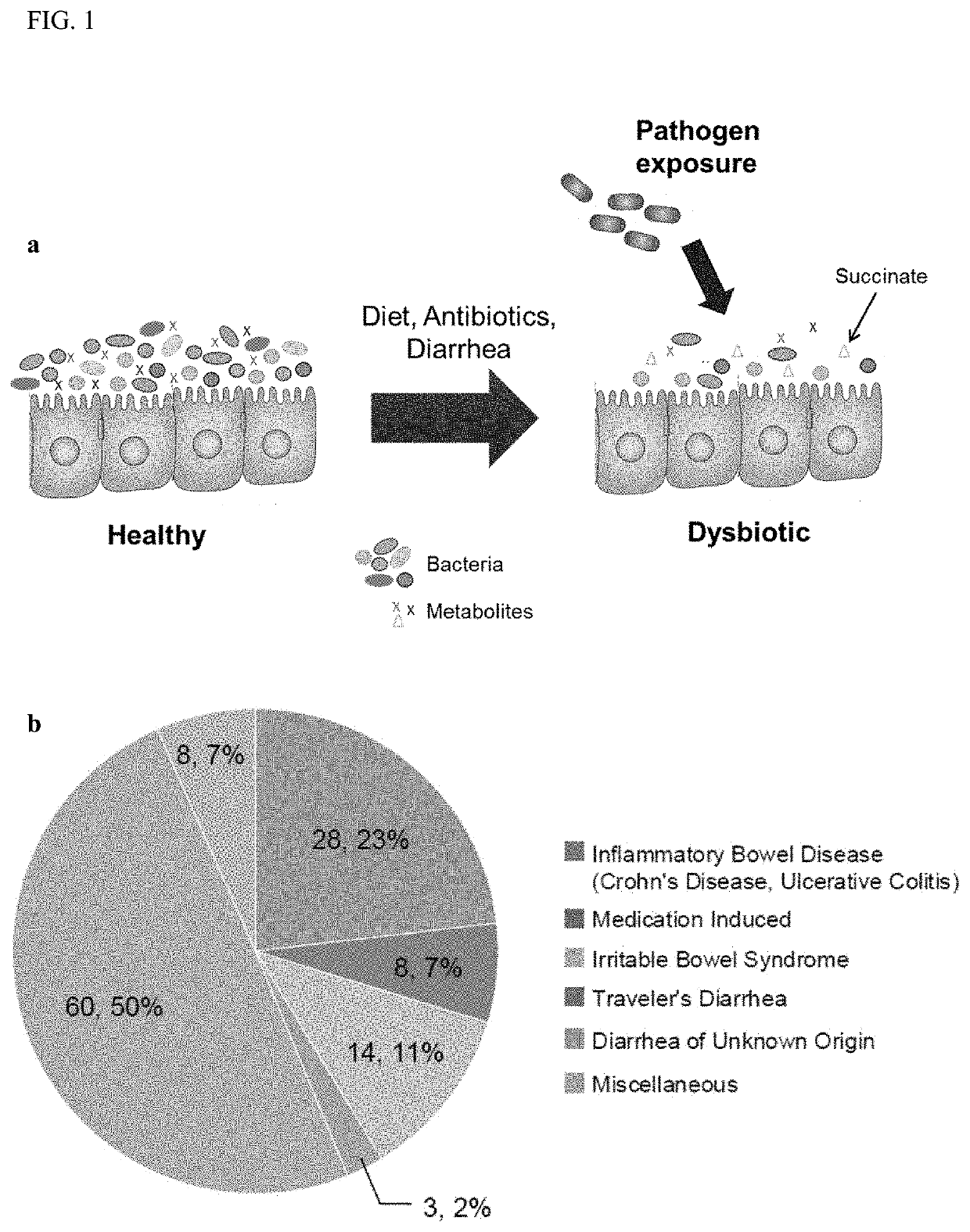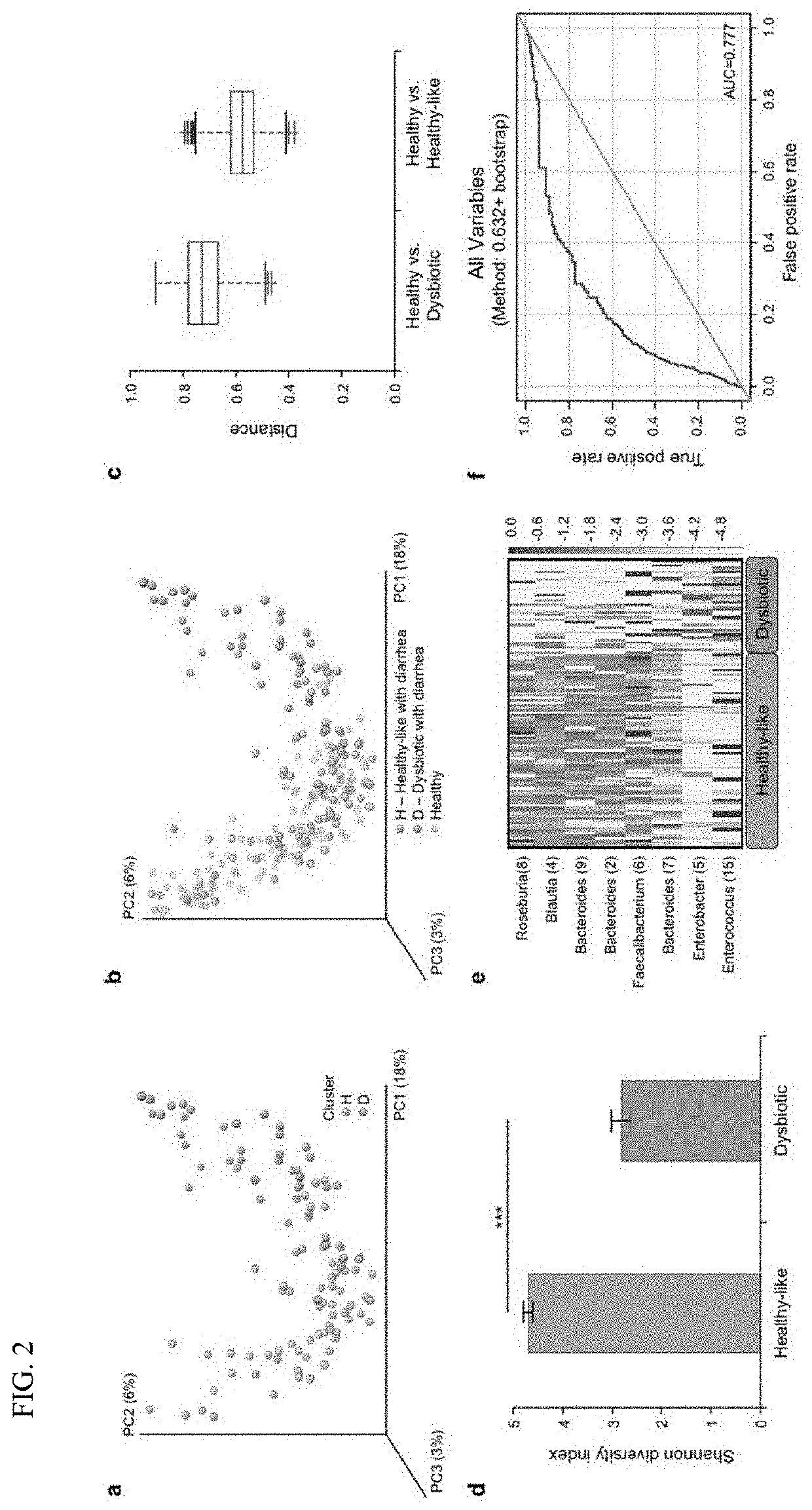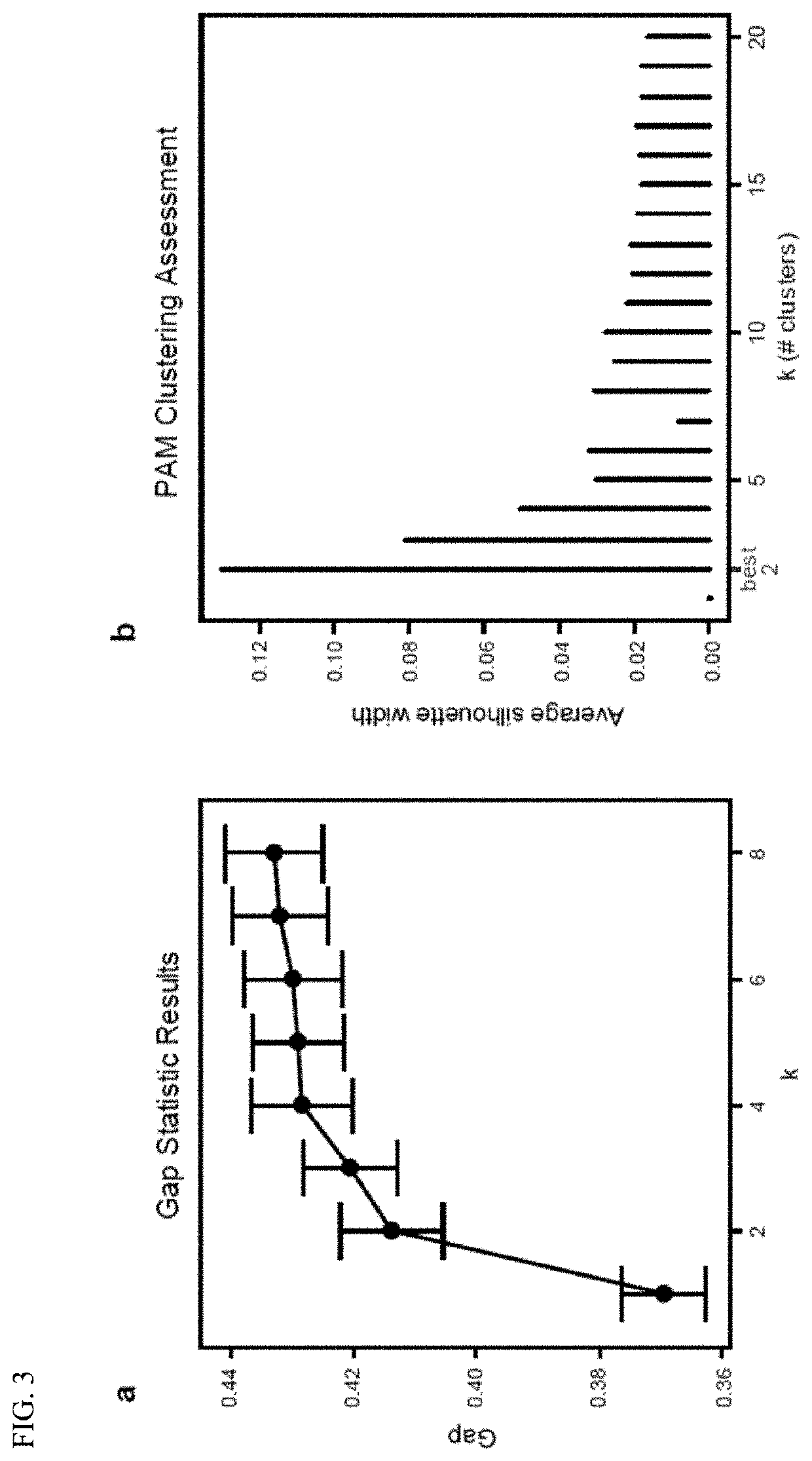Methods and materials for using biomarkers which predict susceptibility to clostridium difficile infection
a biomarker and susceptibility technology, applied in the field of biomarkers of gut microbiota dysbiosis, can solve the problems of morbidity and mortality, antibiotics reducing the diversity of gut microbiome, and altering the metabolic landscap
- Summary
- Abstract
- Description
- Claims
- Application Information
AI Technical Summary
Benefits of technology
Problems solved by technology
Method used
Image
Examples
example 2
Individuals with Diarrhea
[0100]Using the 5 clinical risk factors identified in Example 1, the records of 20,687 patients (Table 4) who presented with diarrhea and were tested for Clostridium difficile at Mayo Clinic, Rochester, Minn. between 2011-2016 were examined. All patients were over 18 years of age (IRB 16-003622). Patients who tested negative and then subsequently tested positive were marked as “converters.” Patients who tested negative but never tested positive were marked as “non-converters.” A single “test negative” date was preserved for each patient and no patients were duplicated in this analysis. Based on the “test negative” date, all 5 risk factors were evaluated for each patient including: prior C. difficile infection, recent hospitalization (within the previous 4 weeks), current hospitalization, antibiotic use (within the previous 3 weeks), and immunosuppression.
TABLE 4Demographic information on converters and non-convertersConverter (n = 662)Non-Converter (n = 22, ...
PUM
| Property | Measurement | Unit |
|---|---|---|
| volumes | aaaaa | aaaaa |
| volumes | aaaaa | aaaaa |
| pH | aaaaa | aaaaa |
Abstract
Description
Claims
Application Information
 Login to View More
Login to View More - R&D
- Intellectual Property
- Life Sciences
- Materials
- Tech Scout
- Unparalleled Data Quality
- Higher Quality Content
- 60% Fewer Hallucinations
Browse by: Latest US Patents, China's latest patents, Technical Efficacy Thesaurus, Application Domain, Technology Topic, Popular Technical Reports.
© 2025 PatSnap. All rights reserved.Legal|Privacy policy|Modern Slavery Act Transparency Statement|Sitemap|About US| Contact US: help@patsnap.com



